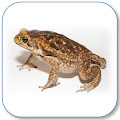 If you were attending this year’s Annual Conference of the Genetics Society of Australasia with the NZ Society for Biochemistry & Molecular Biology, hopefully you made it to the oral presentation of Lee Ann Rollins. Although we do not yet have enough PacBio data for a pure long read assembly of the nuclear genome, the mitochondrion is another matter!
If you were attending this year’s Annual Conference of the Genetics Society of Australasia with the NZ Society for Biochemistry & Molecular Biology, hopefully you made it to the oral presentation of Lee Ann Rollins. Although we do not yet have enough PacBio data for a pure long read assembly of the nuclear genome, the mitochondrion is another matter!
Mitochondrial variation and heteroplasmy in Australian and Hawai’ian cane toads.
Lee A Rollins[1], Mark F Richardson[1], Daniel M Selechnik[2], Andrea J West[1], Timothy G Amos[3], Richard J Edwards[3] & Richard Shine[2]
- School of Life and Environmental Sciences, Centre for Integrative Ecology, Deakin University, Geelong, VIC, Australia
- School of Life and Environmental Sciences, University of Sydney, Sydney, NSW, Australia
- School of Biotechnology and Biomolecular Sciences, University of New South Wales, Sydney, NSW, Australia
Abstract
Background/Aims. Invasive species can adapt to new environments despite low levels of standing genetic diversity due to small founding numbers or sequential introductions. The iconic Australian cane toad was sourced from an introduced population in Hawai’i and conflicting evidence exists regarding the level of genetic diversity across these invasions.
Methods. We extracted mitochondrial sequence data from the genome of one individual sequenced using the PacBio RSII and Illumina X10 platforms. From these data, we assembled and annotated the mitochondrial genome. RNAseq data from 18 individuals collected from Hawai’i and 68 individuals from Australia were aligned to the reference sequence. We quantified polymorphism across samples and heteroplasmy (multiple mitochondrial haplotypes within individuals).
Results. A complete, annotated mitochondrial reference genome was constructed consisting of 18154 base pairs (bp), the largest reported bufonid mitochondrial genome. We aligned RNAseq data to the entire reference sequence, with the exception of a 347bp region containing several 104bp repeats. We identified 16 polymorphisms (17 haplotypes); one haplotype was common to 65 individuals sampled in both introductions. Heteroplasmy was detected at most polymorphic sites and also at multiple sites where the predominant haplotype was common to all individuals.
Conclusions. Mitochondrial diversity is low in Australian and Hawai’ian cane toads. Our findings add to the growing body of evidence that heteroplasmy may be ubiquitous across taxa. Selection within heteroplasmic individuals (recently demonstrated in expanding populations) may provide an important source of variation in genetically depauperate populations.
Funding. Australian Research Council DE150101393 (LAR) and FL120100074 (RS)

No comments:
Post a Comment